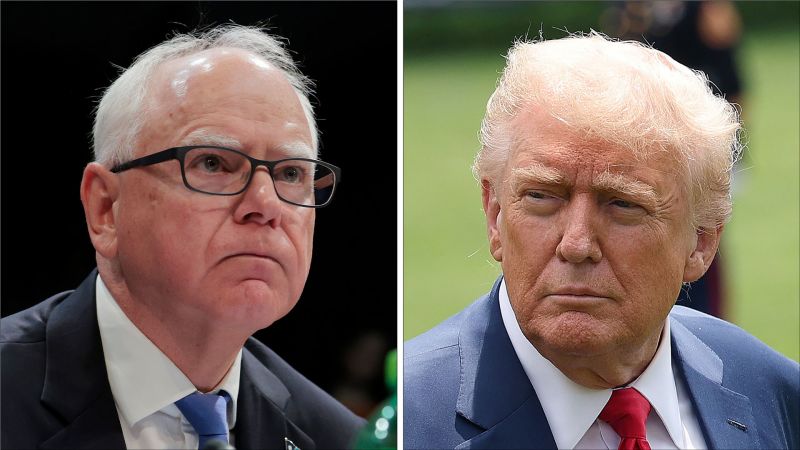In the wake of a tragic shooting incident in Minnesota involving two state Democratic lawmakers and their spouses, President Donald Trump made headlines with his controversial decision not to reach out to Minnesota Governor Tim Walz. This incident exacerbated tensions between the political elite and underscored the highly charged atmosphere surrounding public discussions of violence, accountability, and leadership in the United States.
During an interview with CNN’s Kaitlan Collins on Air Force One, President Trump explicitly stated, “I don’t want to call him,” in reference to Governor Walz. This pronouncement came against a backdrop of increasing scrutiny regarding the governor’s prior appointment of Vance Boelter, the accused shooter. The president’s remarks included an assertion that Walz had ties to the suspect, a claim that has been deemed baseless by various pundits and analysts. Trump’s rhetoric reflects a concerning trend in political discourse, where accountability often transforms into accusation without substantive evidence.
The appointment of Vance Boelter in 2019 to Minnesota’s Workforce Development Board became a focal point in Trump’s narrative. Boelter was arrested following a significant manhunt that has been described as the largest in state history, which highlights the severity of the situation. His alleged intent was to target almost 70 individuals, predominantly Democrats or those affiliated with pro-abortion organizations like Planned Parenthood. Friends of Boelter, such as David Carlson, have described him as a conservative with strong anti-abortion beliefs, which complicates the narrative surrounding his actions and affiliations.
Trump did not shy away from openly expressing his disdain for Governor Walz, implying that Walz’s capacity as a leader was questionable. His remarks included: “I think the governor of Minnesota is so whacked out.” This sentiment could be seen as an attempt to distance himself from the ramifications of the shootings while simultaneously leveraging the tragedy for political gain. Trump further diminished the possibility of engaging in a constructive dialogue with Walz, saying, “I could call and say, ‘Hi, how you doing?’ Uh, the guy doesn’t have a clue. He’s a mess. I could be nice and call, but why waste time?”
Governor Walz’s spokesperson, Teddy Tschann, responded to Trump’s remarks by emphasizing that the tragedy was not about a political feud but rather about the victims and the state’s healing process. Tschann’s statement underlined the need for bipartisan cooperation in times of crisis, noting that the focus should remain on the Hortman and Hoffman families and the broader community of Minnesota. This differentiation from the president’s narrative highlights an essential truth: tragic events often necessitate unity and collective healing rather than exacerbating divisions.
Interestingly, Trump shifted his tone in a different interview with ABC News, where he expressed a tentative willingness to reach out to Walz. “Well, it’s a terrible thing. I think he’s a terrible governor. I think he’s a grossly incompetent person. But I may, I may call him…” This admission points to an acknowledgment, albeit grudging, that communication might be necessary in light of events that call for leadership, regardless of political affiliations.
In contrast, Governor Walz’s ongoing communication with Vice President JD Vance suggests that state leaders are actively working to address the aftermath of these shocking events through collaboration with federal law enforcement. This proactive approach speaks to a more constructive method of dealing with violence and its implications in American society.
In conclusion, this incident raises critical discussions about the responsibilities of leadership in times of crisis, the intersections of partisanship and accountability, as well as the broader societal obligation to protect individuals from violent acts. The diverging responses of Trump and Walz encapsulate the tension within American political discourse, where tragedies often serve as flashpoints for deeper ideological divisions. As the state of Minnesota navigates through the aftermath of this contentious situation, the focus ideally should shift towards healing, understanding, and constructive dialogue, transcending political affiliations for the greater good of the community.



